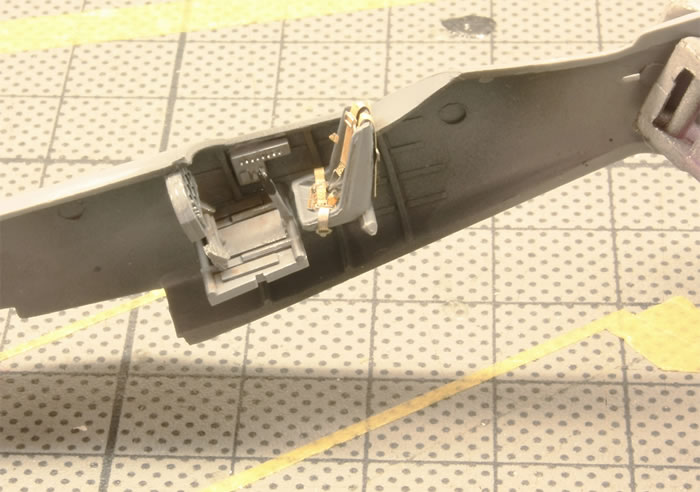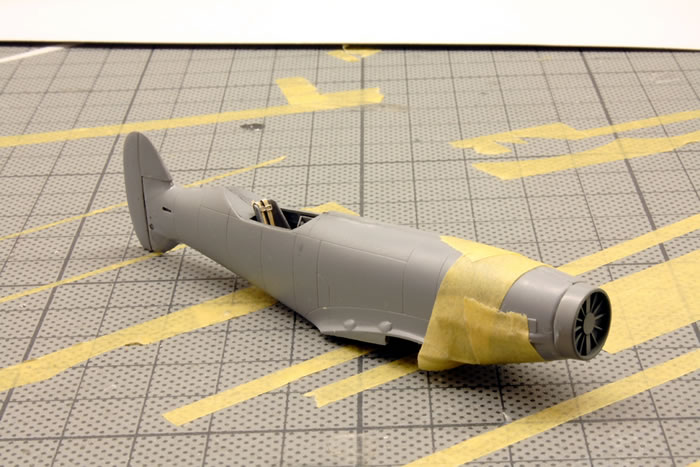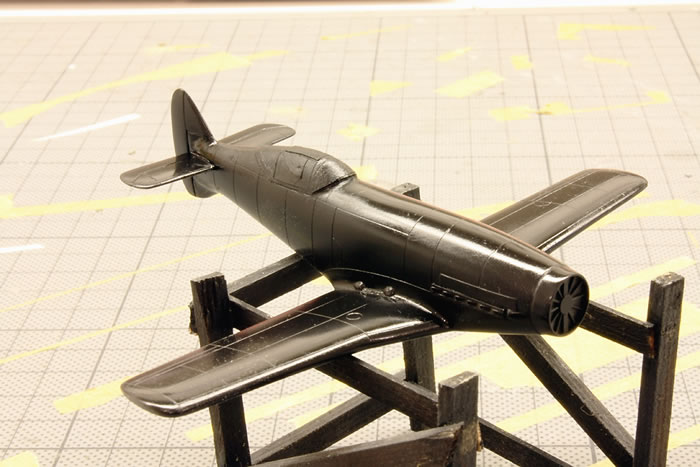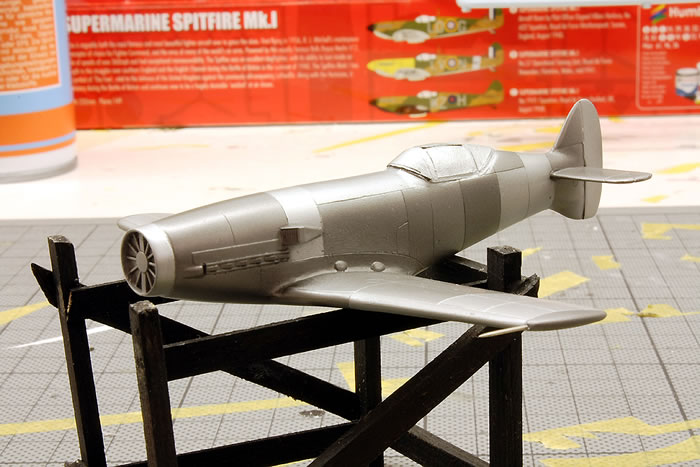Special Hobby's 1/72 scale
Messerschmitt Me 209 V1
by Roland Sachsenhofer

Hobby Boss' 1/32 Spitfire Mk.Vb Trop is available online from Squadron
755.138 kilometres per hour is an impressive speed - and that flight performance with which the Me 209 V1 shown here set a world speed record on 26 April 1939, which was to last until 1969.
At the controls of this fragile and difficult to fly racing machine was flight captain Fritz Wendel, who, by the way, is said to have commented on this high-performance aircraft with the unflattering but quite unambiguous words "nasty little beast".
This world record flight was the culmination of a race of a very different kind: as eagerly self-propelled cogs in the gears of Nazi propaganda and the armament of Germany, the major aircraft manufacturers engaged in a permanent race for profit, reputation and political influence.
For the ambitious Willy Messerschmitt it became tight at the end of 1937 at the latest, after it had become known that Ernst Heinkel's He-100 had relegated the Bf 109 to a second place in the back in terms of speed. The Messerschmitt project "P.1059", from which the Me 209 should develop, was the answer to this threatening challenge.
Unlike the He 100, which was suitable for series production, the Me 209 was designed from the outset as a record-breaking aircraft. A glance at its appearance as well as its technical and aerodynamic design quickly makes this clear: a fault-prone surface cooling system, which only allowed a short flight time, measured in minutes, while losing the evaporating coolant, provided the most efficient aerodynamic form, but would have made any series production more difficult and made field use impossible. The uncompromising pursuit of speed was also due to the extremely small vertical stabilizer, which made every flight with the machine a dangerous adventure.
In any case, the aerodynamic sophistication shown, coupled with well-placed political influence, not only secured Messerschmitt the prestigious title of world speed record, but also ensured the continuation of the already started series production of the Bf 109 as the new standard fighter of the Luftwaffe.
Special Hobby has been offering this kit since 2018, which is kept in the most cultivated "short run" manner. The components shine with good fitting accuracy and clean, burr-free casting.

A certain clumsiness of the parts led me to resort to sandpaper in some areas: all trailing edges were "sharpened", and the landing gear fairings also had to give off some material thickness.

A really big issue was the integration of the clear part into the fuselage contour. Here the positive judgement about the good fitting accuracy must be suspended: at the front windscreen I had to apply massive filler to achieve a reasonably harmonious transition, while the rear part protruded over the contour of the fuselage back. In the end and with only a little patience it was good to do.
The natural metal colouring was tried with metal colours of the Alclad palette.

Here it is advisable to include original photos, since this record machine might have been covered in some parts with quite clearly dark appearing Dural-aluminium.
By the way, the Me 209 story has not been finished with the V1 yet - neither in reality, nor on my workbench! After the outbreak of the war the usability of this construction as a new fighter for the Luftwaffe was tested in a modified form. An enlarged rudder, extended wings and, last but not least, the replacement of the susceptible surface cooling system with a conventional cooling system was to guarantee the everyday suitability of the design.

How this testing turned out can be read in a following article, because fortunately Special Hobby has also immortalized this later version of the Me 209 in its own kit, which I also could not resist. For this time, however, the conclusion is clearly positive, and I would like to thank Special Hobby for taking on such exotic and fascinating role models in the injection kit!
If you are interested in the building process, please have a look here on Scalemates: https://www.scalemates.com/profiles/mate.php?id=10148&p=albums&album=54017
As ever, remarks will be appreciated: ro.sachsenhofer@gmx.at
Model, Images and Text Copyright ©
2020 by Roland Sachsenhofer
Page Created 24 March, 2020
Last Updated
24 March, 2020
Back to HyperScale Main Page

|
Home
| What's New | Features | Gallery | Reviews | Reference | Resource Guides | Forum |